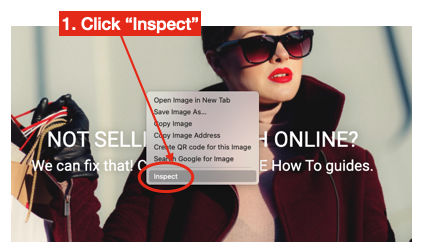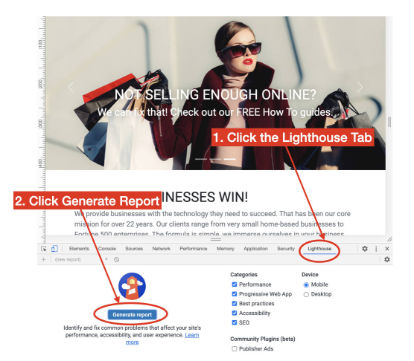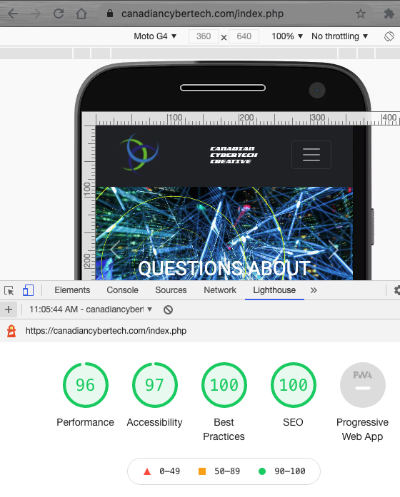
SEARCH ENGINE OPTIMIZATION
Before you Take Action, Understand the Basics
Search Engine Optimization or SEO is a set of technical practices to ensure a given resource (website) gains the highest possible search engine results for a given topic or search term. SEO is very complicated and the marketplace is further complicated by masses of companies claiming to be experts in the field who don't even understand the basics. Prior to hiring any agency or person to help increase your SEO scores, we urge you to read this article.
There are multiple phases to search engine optimization. A lot of the work goes into the placement of text terms within a website and additional use of the text as supplemental support. A website is then made public and eventually becomes "crawled" by a search engine. Search engines start with your base score, however a very complicated algorithm then takes over and monitors how people interact with your website from various IP addresses and devices. Search results are also further skewed by the fact that many browsers (like Google Chrome) cache pages you have visited before and can factor these in to results as well as geographical proximity and even the device you are on (mobile vs. laptop).
So where does one start to understand their SEO score? We always advocate first addressing the structural components of a website. With any website, you can check your SEO structures by using the developer tools. To start, simply perform the following audit on any website.
-
Open the website domain in Google Chrome (other browsers have similar features, see the documentation for instructions).
-
Right click (Control-click on OSX) on the website within the browser and select "Inspect" from the content menu.
Alternatively, to open the developer console in Google Chrome, open the Chrome Menu in the upper-right-hand corner of the
browser window and select More Tools > Developer Tools.
-
When the developer console opens, click on the Google Lighthousetab (1), then click the Generate Report
button in the bottom pane (2).
-
When the report is finished, look at the SEO score (below on right hand side).
-
In this case, our site (the one you are on) scores a perfect score. It is vital to understand
that this score does not tell you how well your website performs for any given term, however. It merely informs you
if your website is structurally in good condition to facilitate the next steps in SEO. For example,
if you want to be the number one website in Google search results for the term
"Edible Kites", this test does not indicate anything about how well you score for that particular search term. To address
specific terms, the next level of SEO work has to include research on search traffic and a variety of other tasks.
-
If your website is not scoring at least 90 points or above, call us for help and we can offer a small quote to fix
that issue prior to moving to the next level.



Site scores based on the Homepage of this website.
Common Causes of SEO Structural Fails
Let's assume that your website does not score over ninety points for the SEO category. There are many items that may be wrong. The most common are lack of alt text for images, links lacking descriptive text, lack of titles on links and many more small errors. Some of these you can fix yourself. Don't be sidetracked by so called SEO-Experts who claim they can solve all your problems by merely changing your meta keyword declarations. They are sadly confused and will waste your time and money. Also, anyone who calls you out of the blue and claims to work directly with Google is often lying. Google offers many resources freely for anyone who wishes to learn about search engine optimization. If you visit the Google SEO Resources Pages, you will know more than these so called experts within a few hours.
Moving Forward on SEO
Once your website has scored the minimal 90% on the Lighthouse test, it is probably prudent to move to the next steps. This involves a manual invesntory of what search terms you want your site to be ranked high for. Before jumping to the conclusion that you actually know the answer for your website, it pays to take the time to review the actual search keyword inventory to see what people in your business domain and area are actually searching for. We have had many clients state they think they should be number one in search engines for terms like "quickly catching rapid racoons" when in fact we were able to show them concrete data that people who had rabid racoon issues searched for "animal control" most of the time. While most major search engines have some advanced machine-learning and thesaurus algorithms, the differences between the terms you want and those people search for can be miles away.
There are ways to get search term inventories for laypeople however this is best left to someone with the industry experience to analyze the data and come up with a plan. Nevertheless, if you wish to try this yourself, it is fairly easy. Just go to Google's Keyword Suggestion term page and enter your search terms. It is free and most other search engines will have reasonably similar result breakdowns.
I have my Terms, What Next?
Once you are confident of your terms, it is time to revisit your website and start by adhering to the basics. Most search engines weight different styles of text so weaving your terms into H1 elements near the top of your pages is often a good place to start. Don't forget your URI paths and page names either. A path like http://foo.com/links/line-one.html doesn't convey much to a search engine in terms of semantics. Alternatively, a page with a path like http://foo.com/automobile-resources/how-to-fix-1941-packard.html has some nuggets. There are literally dozens of subtle, yet critical changes that many website owner coudl easily make to increase the viability of their search ranking being improved. The list is probably almost infinite.
Any good agency will be able to work with you, starting by analyzing your traffic patterns, site structure and search terms then coming up with action plans. Here is another caveat. How many items should you try at once? If you try three things and move up one position in the top ten page for your term, it is possible that 2 items helped yet one hindered your efforts. It is usually a good policy to go at this one at a time. Change, monitor, evaluate and adjust as often as needed.
Other Considerations
Once a website is live, a major influence on the search engine position is the result of real world, dynamic interactions with your website. So what does this mean? Basically search engines monitor what sites are served up for the top ten to thirty results, then they watch which ones are clicked upon and what visitors do from there. If your site just happened to be about golf and somehow you ended up number one for the search term "marmalade", your site would likely quickly slip back in rankings for that term based on the interactions people had with it (unless of course golfers are huge fans of marmalade or suffer from some form of severe condiment-related ADHD condition).
To fully understand how this mechanism works, it would take hours upon hours of study. Having written search engines ourselves, we
not only have a very good grasp on the basics, but understand the complexities of major search engines. Just to give you an idea of how
Google tracks clicks, consider a search result. If you view the true link offered by the top search page, you will see the tracking in
all it's splendor as something like this:
https://www.google.ca/url?sa=t&rct=j&q=&esrc=s&source=web&cd=&cad=rja&uact=8&ved=2ahUKEwjh68bP8ufvAhXM6J4KHRtYCiIQFjACegQIBBAD&url=https%3A%2F%2Fuk.linkedin.com%2Fin%2Ftesty-tester-b97163192&usg=AOvVaw1Y8M3UzFvjaG-WpnDW_7Tm
Note the use of the REST style key-value pairs built into the url? By clicking on the link, you are actually notifying Google that
you have clicked on this link and related it back to your own profile which likely includes your IP address, any cookies in your browser,
your Google or other account data and a lot more. Some of the variables represents 62-bits per character in possible encodings (26 lower case letters,
26 majuscule characters plus 0-9) meaning there could be a LOT of data in the values for keys like "ved" shown above. At 45 characters, there are literally
at least 2.818497908738523 to the exponential power of 82 possible combinations (otherwise known as a "VFLN"!). These mechanisms likely
prevent anyone from up-voting their own links by repeatedly doing searches for their search terms, clicking on the link to their website and repeating.
Note that such pages are not actually dynamically generated when you search, rather, are a sort of binary tree match-and-serve pattern. Any page updates are
done behind this facade at an interval determined by the search engine owner.
If you want to learn more, please do not hesitate to contact us. The first call is free for new clients and we can help you navigate the path forward without breaking your bank account. Use the contact form on this website.
